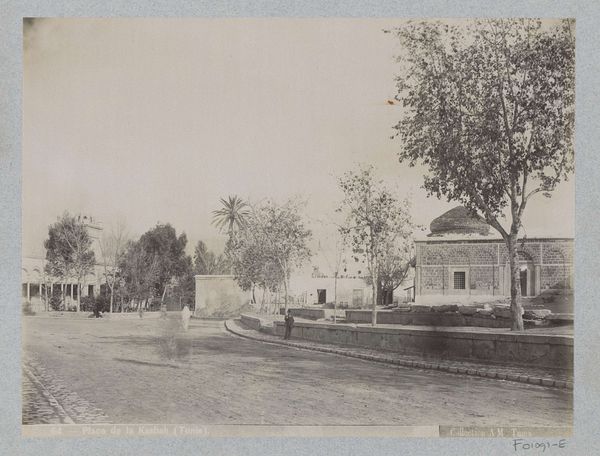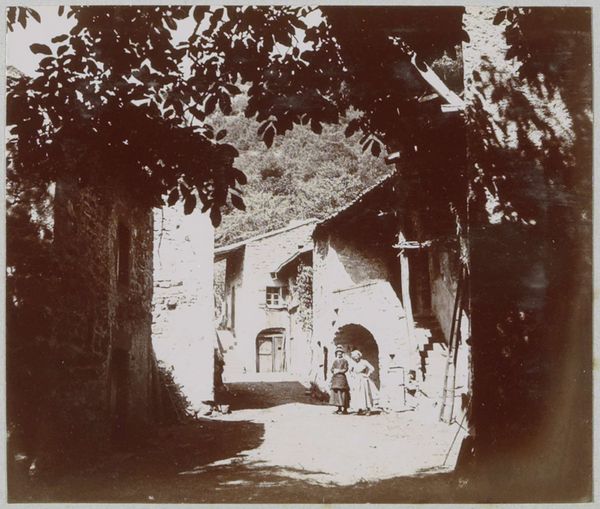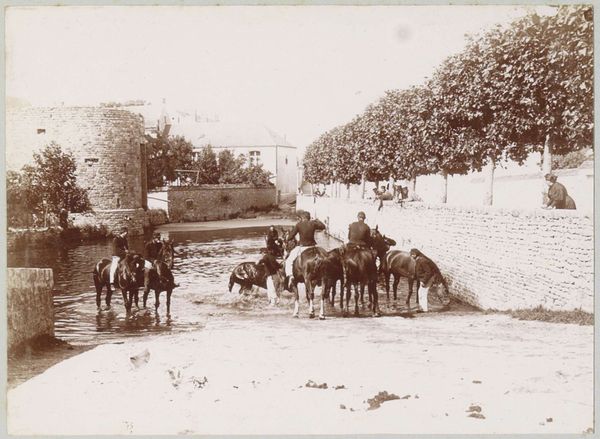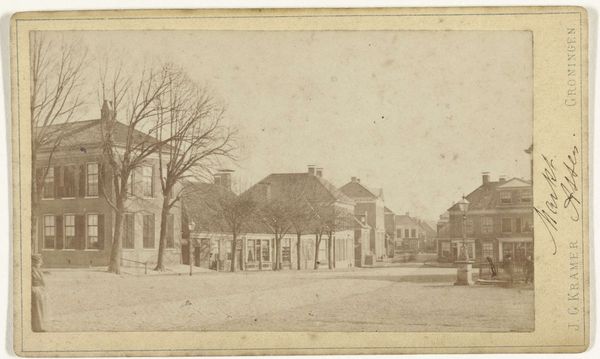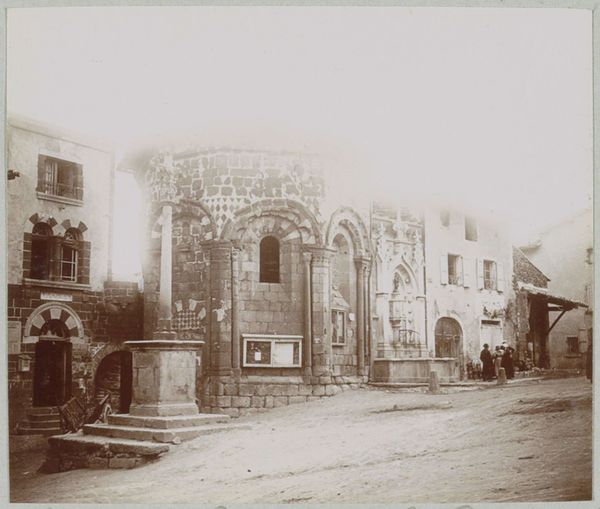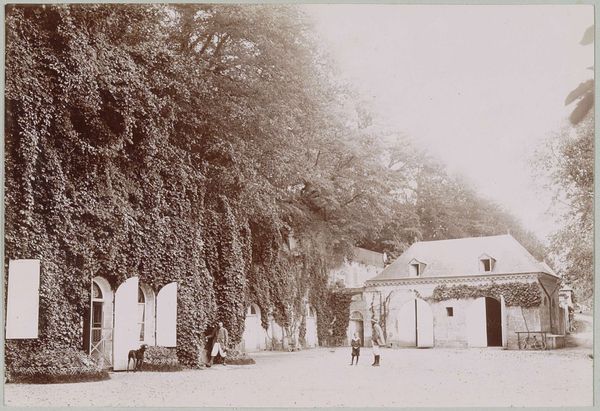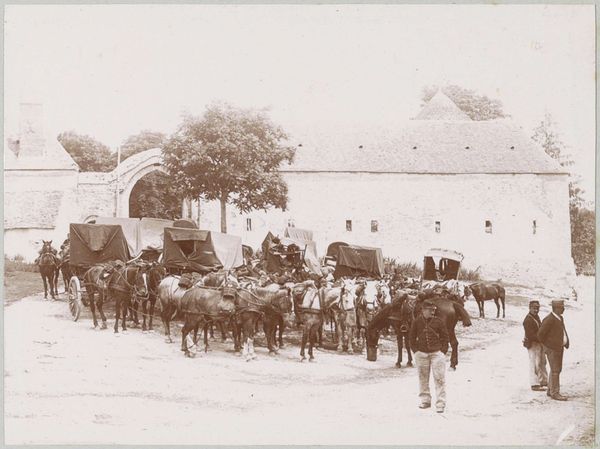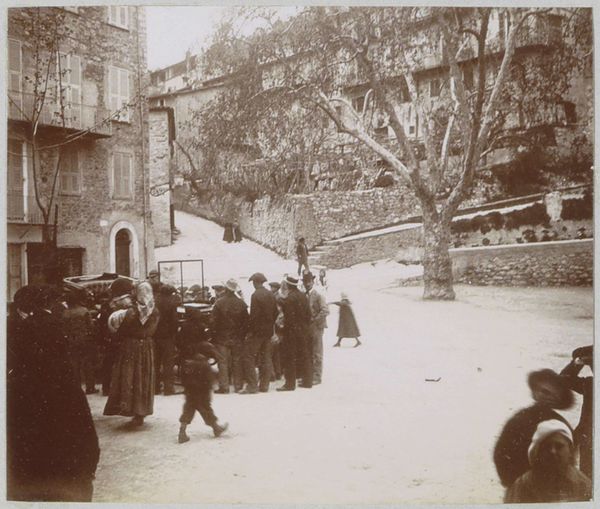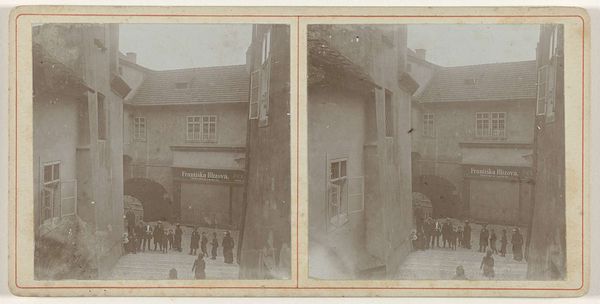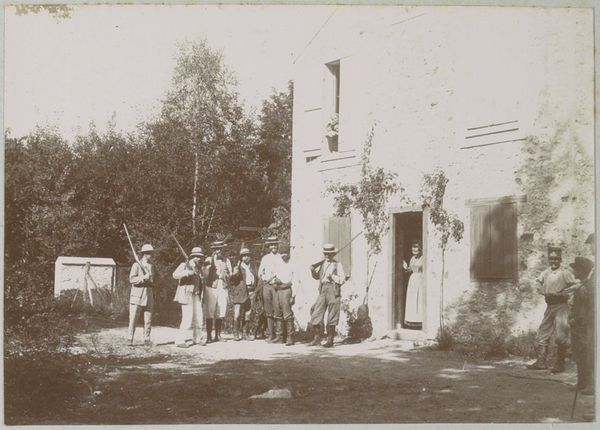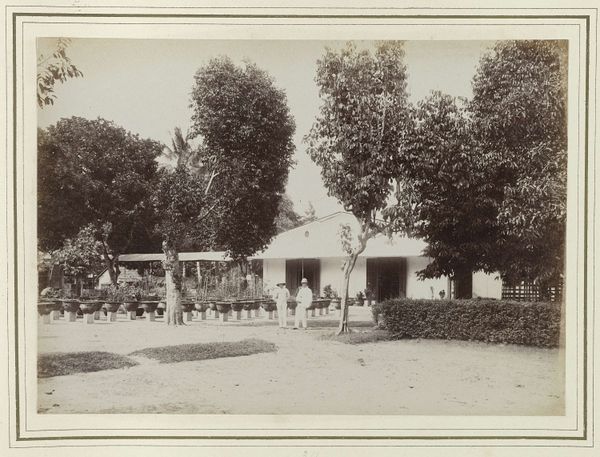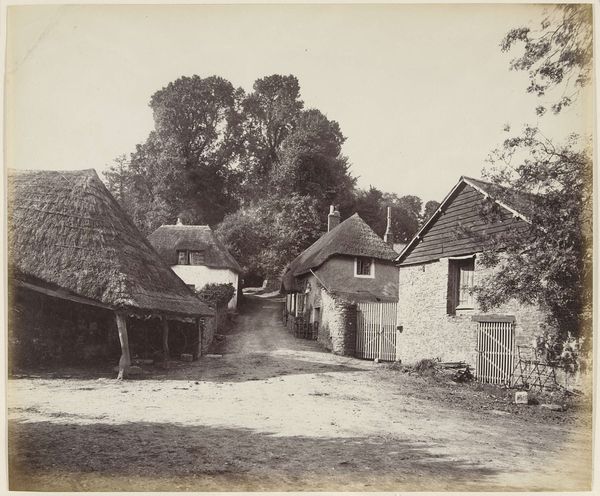
print, photography
#
pictorialism
# print
#
landscape
#
photography
#
historical photography
#
cityscape
Dimensions: image: 13.6 x 19 cm (5 3/8 x 7 1/2 in.) sheet: 20 x 28.3 cm (7 7/8 x 11 1/8 in.) mount: 21.3 x 30.3 cm (8 3/8 x 11 15/16 in.)
Copyright: National Gallery of Art: CC0 1.0
Curator: This is “A Square – Ronda,” a photographic print created by James Craig Annan in 1914. Annan, a key figure in the Pictorialist movement, captured this scene with a keen eye for atmospheric perspective. Editor: It feels strangely hushed. The tonal range is so narrow, almost monochromatic, that it casts a sense of timelessness, like peering into a half-remembered dream. Curator: Absolutely. Pictorialism, as a movement, aimed to elevate photography to the level of fine art by manipulating the image-making process. Annan often employed techniques like soft focus and special printing processes, evident here. The choice to photograph a Spanish square in this style really positions the everyday within the aesthetic realm. Editor: There’s a strong evocation of journey and burden too. The heavily laden donkeys immediately ground us, their posture hinting at a long, tiring journey. They function almost as symbolic carriers, not just of goods but also of the weight of the place itself, connecting past with present. Curator: That reading opens up so many avenues for exploration. Ronda, a city with a layered history, becomes not just a backdrop but a character. I find myself thinking about Spain’s neutrality during World War I, just as this photograph was made, a kind of stillness in the heart of broader European upheaval. Did that influence Annan’s vision? Editor: The symbolic associations could definitely point that way. The square, generally a hub of public life, feels oddly vacant, almost staged. Perhaps it reveals the weight of those broader European events, the quiet apprehension beneath the surface. There is tension in stillness. Curator: It makes me consider the impact this piece could have had on British audiences in the 1910s. It suggests a nostalgic desire for untouched places, contrasting with the industrialized and increasingly modern world that Britain was becoming. Editor: Precisely. What begins as a tranquil landscape quickly becomes layered with historical and symbolic meaning. A seemingly simple image offers us access into understanding an individual and cultural frame of mind.
Comments
No comments
Be the first to comment and join the conversation on the ultimate creative platform.
